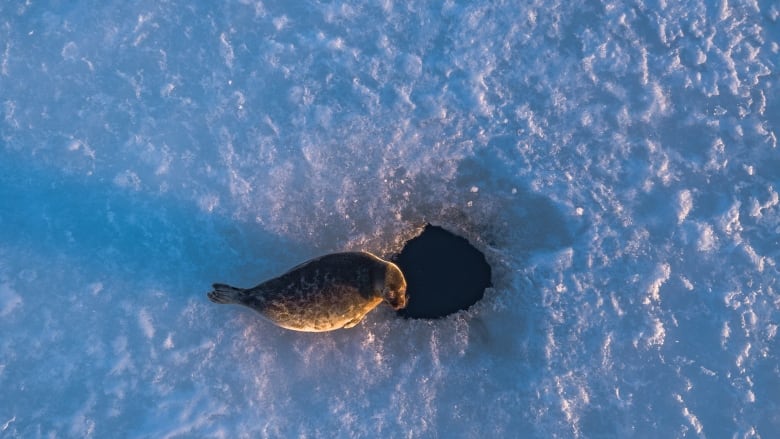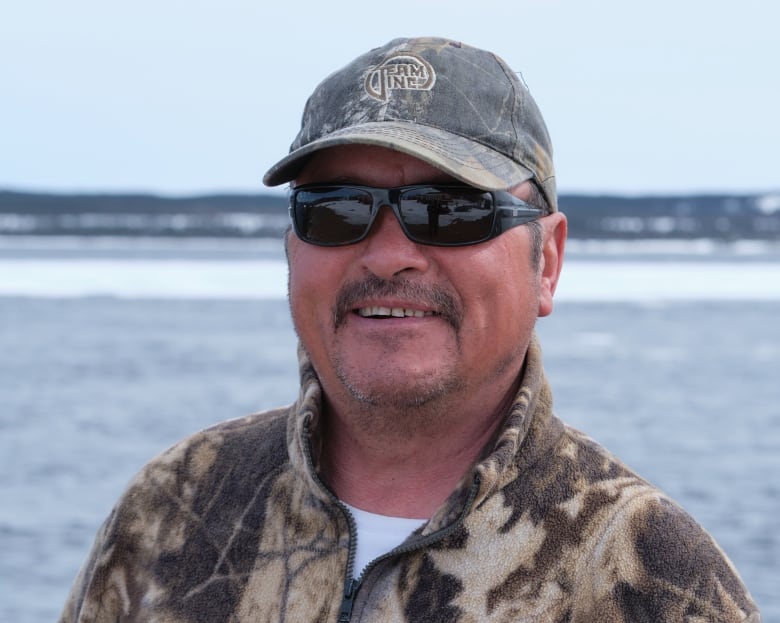Labrador seal hunt largely sidelined as sea ice hits 50-year low
Hunters worry about fate of seal pups as ice thins beneath them

Mina Campbellof North West River has been hunting seals each spring for 40 years, one of many who take to Labrador's ice by late April in an activity rooted in Indigenousculture for centuries.
But Campbell hasn't made it out once yet this season, due to the warm temperatures and lack of ice.
"The ice conditions are too iffy. Even though it's a big part of our life in the spring, it's certainly not worth risking your life," said Campbell.
That risk is also record-setting.
In the last week of April, the Canadian Ice Service recorded the lowest amount of sea ice in Labrador in its history of record-keeping, which dates back50 years. The coast of northern Labrador is down to about 14 per cent of its ice cover, according to the CIS, a contrast with the average ice cover for this time of year ofabout 35 per cent.
The numbers are stark.
Campbell said she's noticed in the last few years it seems like the ice is thawing up earlier. Thatcauses troublefor the hunters,as they can only begin hunting the seals once they've grown big enough to eat.

She said there are a few hunters who have caught some seals this season, but most people are sitting back and watching as dozens of seals make their way out of the snow onto the ice.
"They are spying them from the shore, so the seal population is very good here, and especially this year because people aren't hunting them," Campbell said.
Concerns for seal pups
Although there might not be a concern for population issues now, those thin ice conditions might be detrimental to seals in the future as climate change progresses.
That's a major concern for Derrick Pottle, a hunter in Rigolet, the southernmost community in Nunatsiavut, Labrador's Inuit territory.
Pottle said ringed seal are the most popular for Inuit to hunt, with their pups born on the ice under a thick layer of snow.
With warming temperatures, that layer of snow is melting. Thatleaves newborns vulnerable to the coldand exposed to predatorslike crows and wolves.

He also worries that asthe ice starts breaking upearlier than normal, those newborn seals will not be strong enough to swim and survive in the water.
"I am concerned that a lot of these seals are not going to survive," he said.
Pottlewas on the ice hunting about three weeks ago and said he was alarmed at how young some of the seals were that were emerging from underneath the melting snow.
"They were very, very small. Some of them were just being born," he said.
Pottle said he's not just concerned aboutseals as climate change's effects becomemore evident along Labrador's coast. He wonderswhat will happen toother animals and fish species as the water warms up, noting that even one or two degrees in temperature could make a huge difference.

Hazy predictions ahead
Ice data and temperatures are recorded and analyzed by the Canadian Ice Service, with clear trends emerging over time.
"We are definitely seeing some big changes. We've seen a lot of variability this year," said Doug Leonard, an ice forecaster with the CIS.
Leonard said Labrador is about fourto sixweeks ahead of where the temperatures and ice coverage would normally be, and it doesn't look like there is any more ice in the forecast.
With so much variability this year, Leonard said, it's getting harder to predict what will happen with the ice.
Whilehe can't attribute climate change to a single year, according to CIS records Labrador's ice has been thinning, and willsee a continuation of warmer winters such as this one.
"We have seen a decrease in ice, but this year is definitely an anomaly," he said.
Thin Ice is a special CBC series about the changing climate along Labrador's north coast, and the Indigenous-led responses arising from it. Read more in this series here.
With files from Labrador Morning












_(720p).jpg)


 OFFICIAL HD MUSIC VIDEO.jpg)
.jpg)



























































































